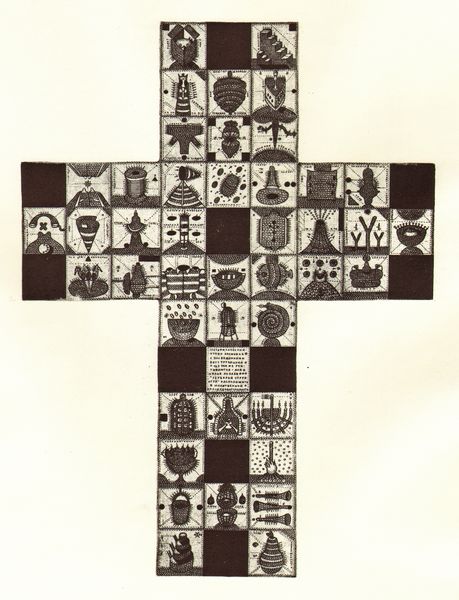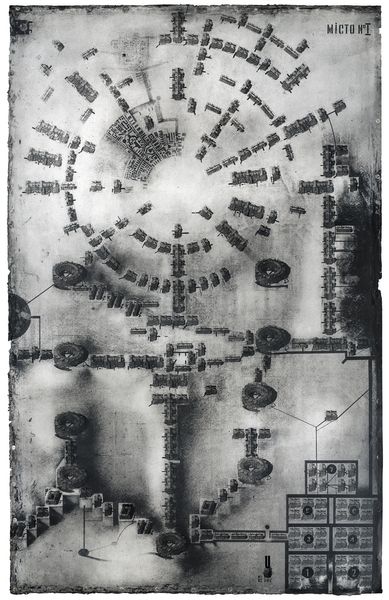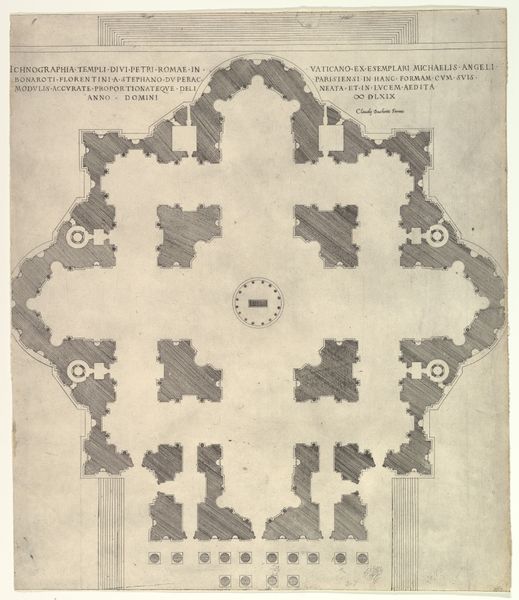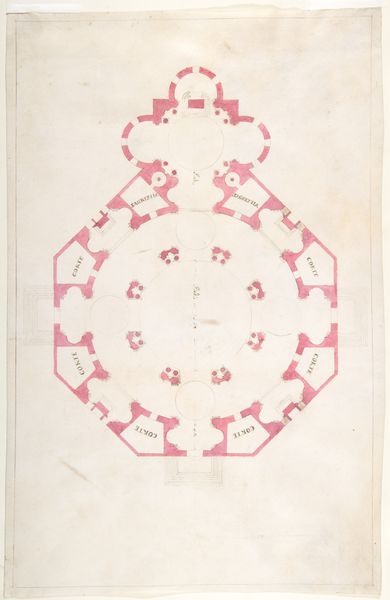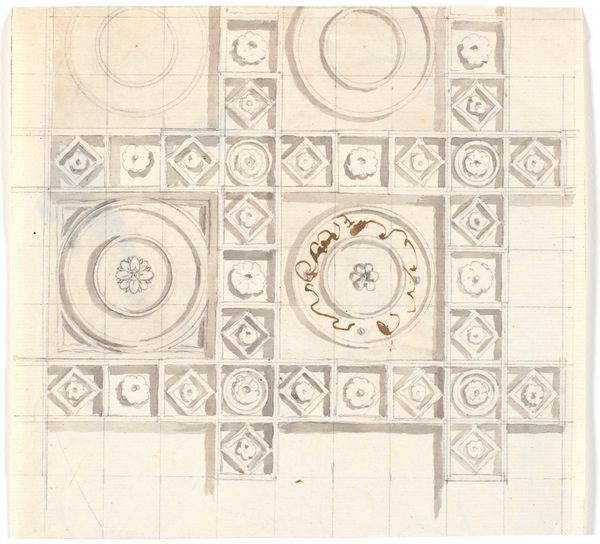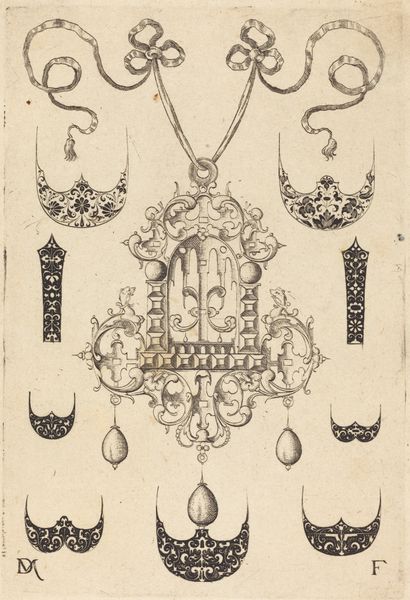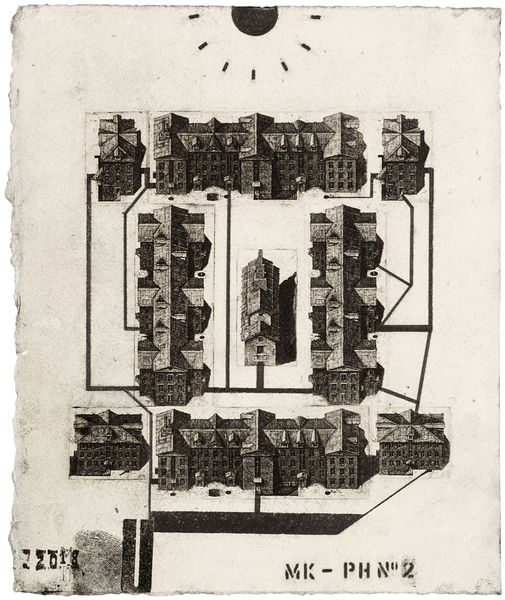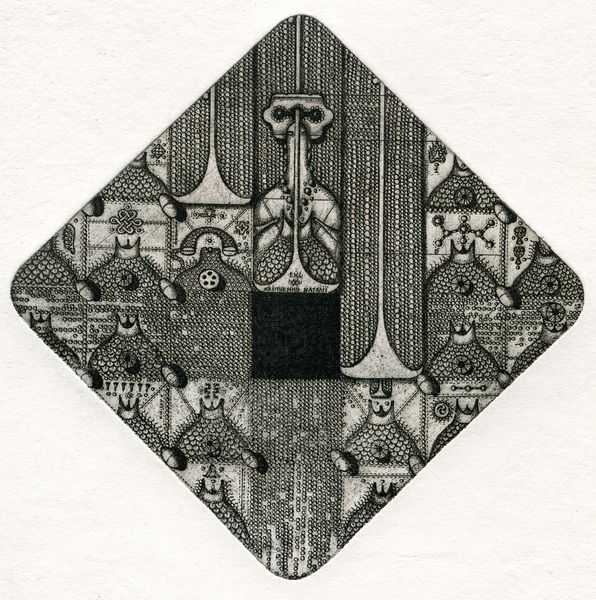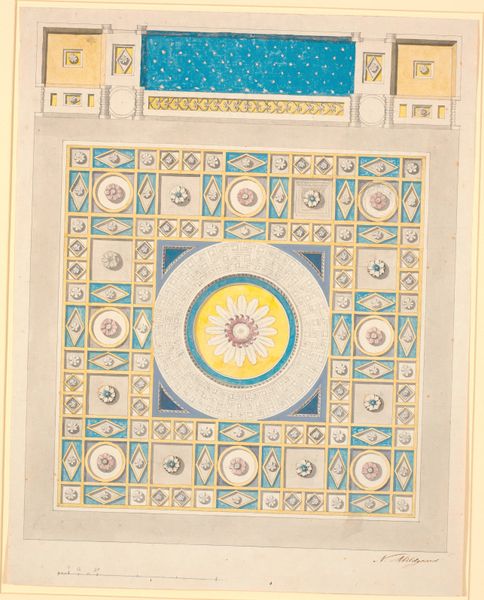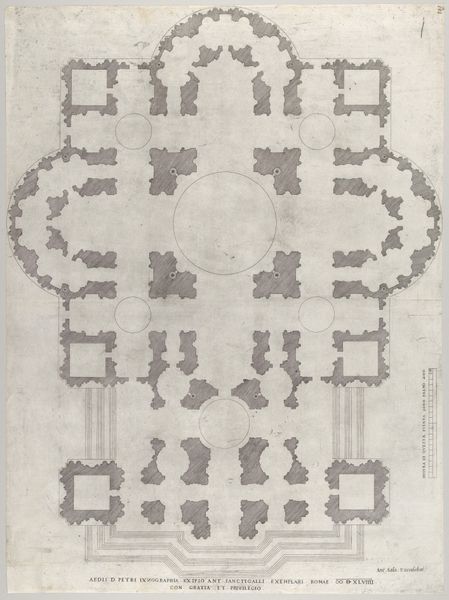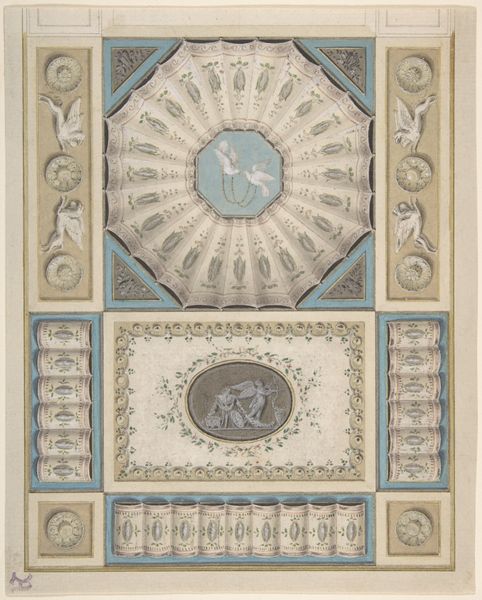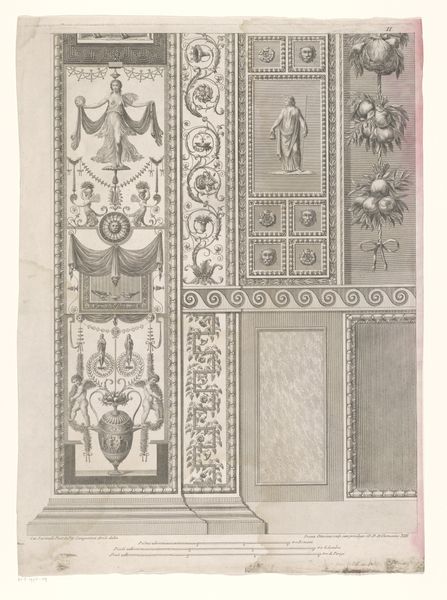
print, textile
water colours
textile
decorative-art
mixed media
watercolor
Curator: Here we have a textile work titled "Handkerchief" made between 1875 and 1900, crafted using a mix of weaving and printing techniques. It comes to us from the Oriental Print Works. Editor: My first thought? It feels playful, almost whimsical! The arrangement of the playing card imagery on the handkerchief lends it a quality of informal elegance, wouldn't you say? Curator: It’s fascinating to see the clear influence of ukiyo-e and the broader trend of Orientalism in this piece. Note the symbolism embedded in playing cards and the ways in which identity, chance, and representation intertwine here. It offers commentary on social hierarchies of the late 19th century. Editor: Precisely. Playing cards carry such potent, pre-established cultural meaning. Arranged as they are, around a central company emblem, it seems to playfully hint at societal games of chance and status. It is really captivating how something we see so casually in our present reflects something so relevant back then. Curator: Right, and considering the work’s creation by the Oriental Print Works, we must also consider labor and the industrial context of textile production at the time. Who made this, and under what conditions? This reveals insights into the social and economic structures of that period. It may look playful on the surface, but actually hints at structural issues, for instance class divisions of the Gilded Age. Editor: Agreed. It's remarkable how the piece manages to juxtapose notions of entertainment and potential commentary on labour practices and the production economy during its time. Looking deeper unveils layers of symbolic depth behind its beautiful veneer. It is a fascinating study in cultural context. Curator: The synthesis of diverse symbols in this “Handkerchief,” encourages us to think about complex power structures that shaped art and labor in America. It provides food for thought on a much larger, perhaps global scale, about systems that remain persistent even in our contemporary lives. Editor: Absolutely, considering this, it really makes one see the importance of uncovering how cultural expressions often encapsulate, mirror, and challenge our underlying ideologies in subtle, complex ways. I will remember that going forward.
Comments
No comments
Be the first to comment and join the conversation on the ultimate creative platform.
